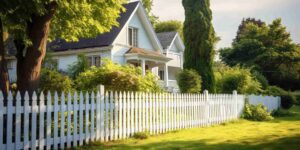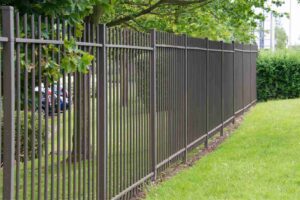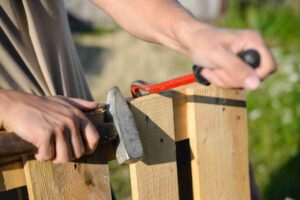What is a Stockade Fence and Is it Right For You?
In this blog, let’s explore what a stockade fence is. We’ll learn the common material options and their benefits for enhancing curb appeal while securing your property. Lastly, we will discuss the practical aspect of building one by considering the costs.
What is a Stockade Fence?
A stockade fence consists of wooden boards closely positioned without any gaps between them and commonly features pointed tops on its pickets. What makes this fence better than a typical picket fence or a chain link fence is it offers more privacy.
The typical height of stockade fences can range from 6-8 feet, but you can customize them according to your preferences. You can also choose a different material for installing a stockade fence. While vinyl is trending in the fencing industry, many homeowners still prefer using wood for their stockade fence due to the difference in repairability and cost-effectiveness compared to vinyl.
Unlike a shadow box fence, the boards of a stockade fence are hinged/flush against one another instead of offset. They’re simply two different styles of privacy fencing.
Common Stockade Fence Material Options:
A stockade fence is typically made of wood. The most common materials are cedar, spruce, or pressure treated wood.
- Cedar stockade fence: Cedar, a natural insect repellent, experiences less warping than pine. Additionally, cedar tends to resist rot (though not entirely rot-proof), making it a durable and long-lasting material.
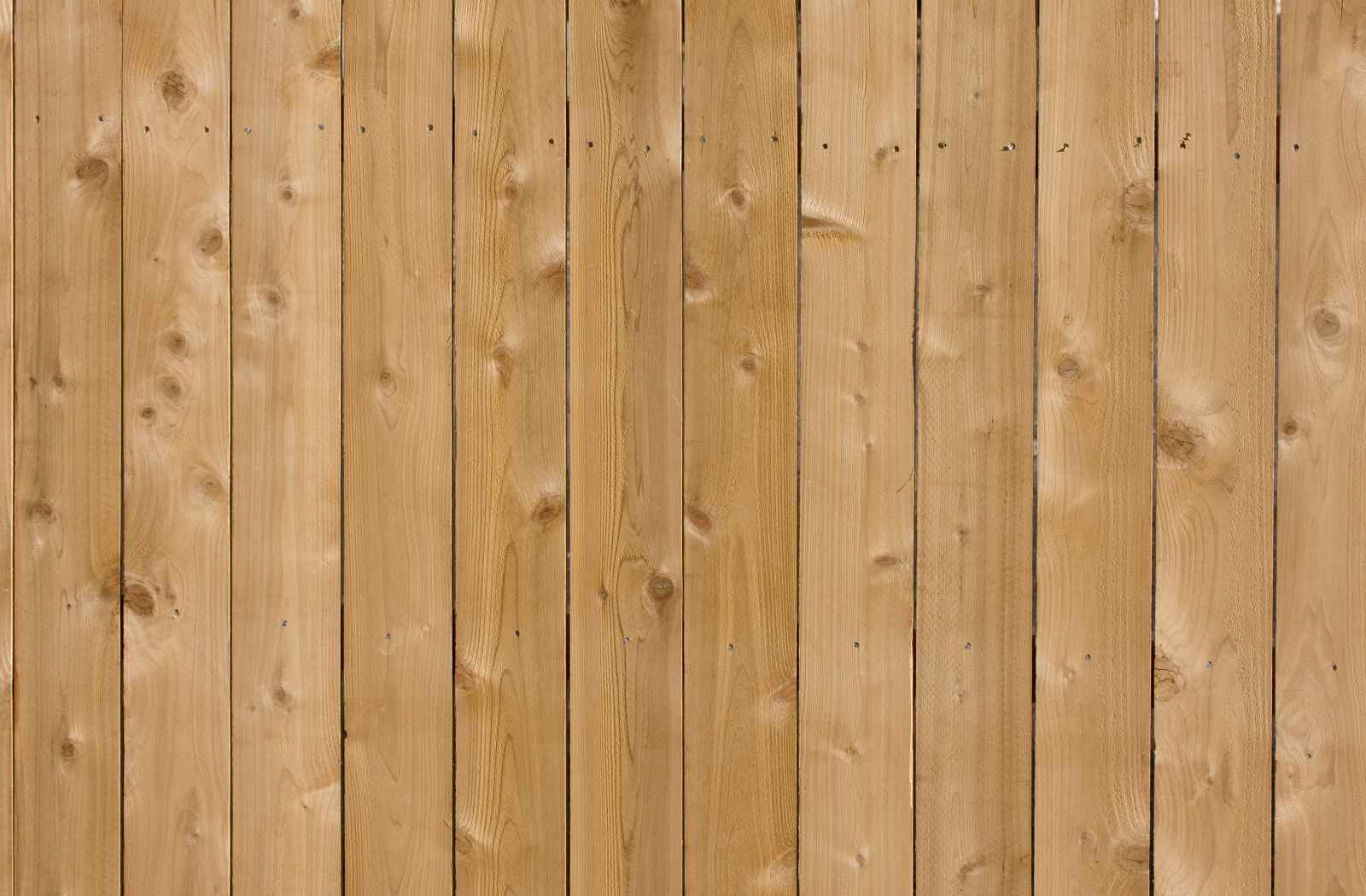
- Spruce stockade fence: More budget-friendly than cedar, pressure-treated spruce
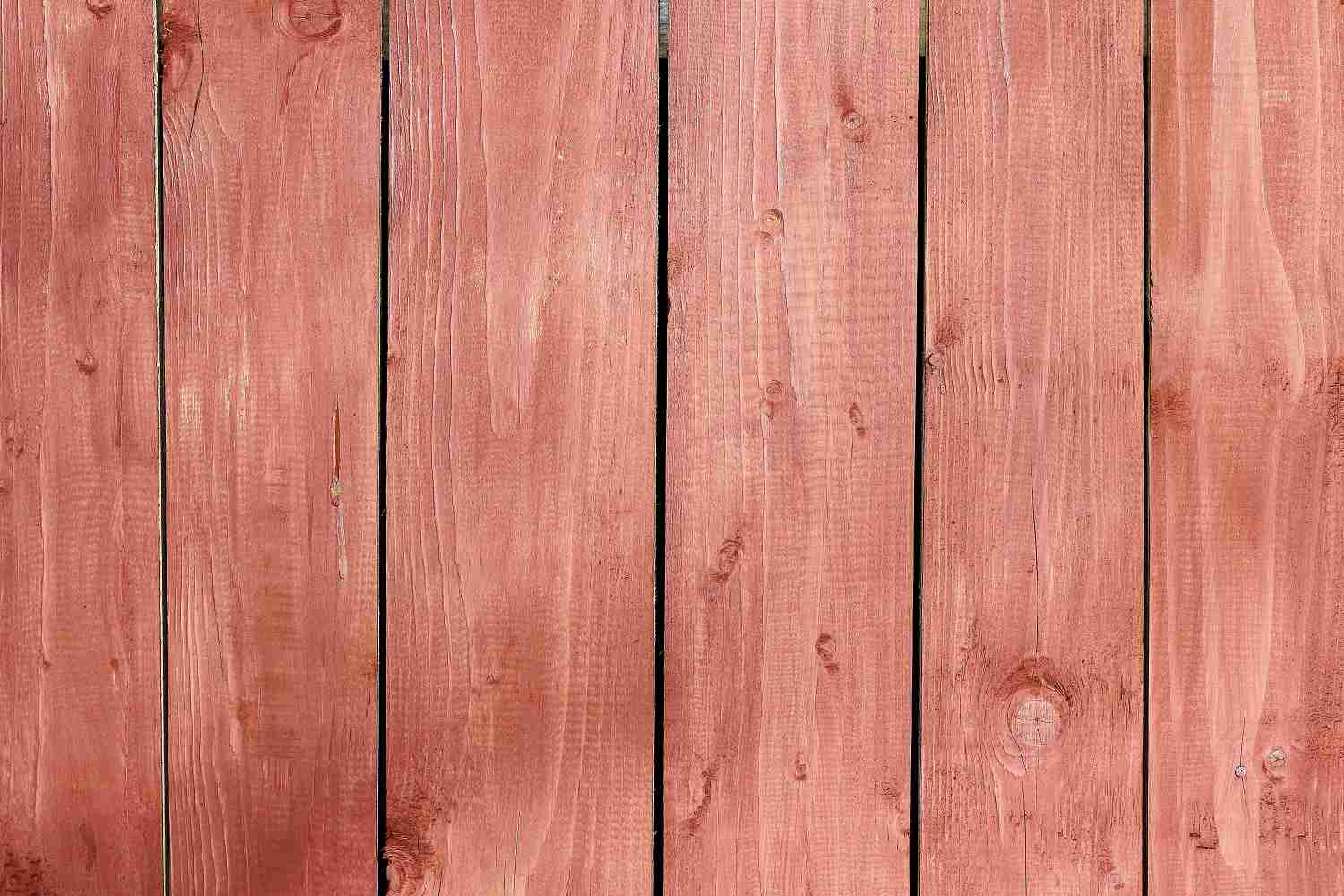
- Pressure-treated stockade fence: Pressure-treated fences (pine and spruce) are the most cost-effective among the wooden choices. These fences are also treated with pesticides to prevent destructive insects like termites.

What are the Benefits of a Stockade Fence?
There are plenty of benefits stockade fences can offer. Here are some of them below.
- Privacy: The primary advantage lies in enhanced privacy offered compared to the standard picket or chain-link fences. The tightly placed boards eliminate gaps, making a stockade privacy fence perfect for families with dogs or young children.
If you want to explore other types of privacy fences, you can check them in our previous blog post here.
- Low Maintenance: One of the best features of a stockade fence is that it’s easy and affordable to fix, unlike its other counterparts. The construction of the fence gives owners the ability to quickly fix or replace one of the individual boards instead of the entire fence.
- Customizable Style and Visual Appeal: Stockade fences are a popular choice among homeowners due to their traditional and simple design. They can also be customized to fit your property’s aesthetic in various shapes and sizes.
- Fence Lifespan: On average, a wooden stockade fence can last between fifteen and twenty years if it is maintained properly.
Where Does the Name Stockade Fence Come From?
Did you know: The term “stockade” was originally tied to military prisons within camps. Instead of serving as barriers around the camp, these fences were first created where prisoners would be confined within a designated area. These were widely common in historic military sites such as Jamestown or Williamsburg.
Which Side of the Stockade Fence Faces Out?
Based on common fence etiquette, the standard installation involves placing the unfinished side of the fence towards your property and the finished side facing your neighbors.
In certain neighborhoods, it’s not just polite but a legal obligation to have the finished side of your fence facing outward. Some areas have building codes that explicitly mandate installing the fence with the finished side towards your neighbors.
What is the Cost of Building a Stockade Fence?
The cost of building a stockade fence is around $8 to 15.00 per linear foot. Other factors that affect the cost of installing a stockade fence include material, location, dimensions, and complexity. We recommend consulting a trusted fencing company for a personalized and accurate quote that meets your specific needs.]
